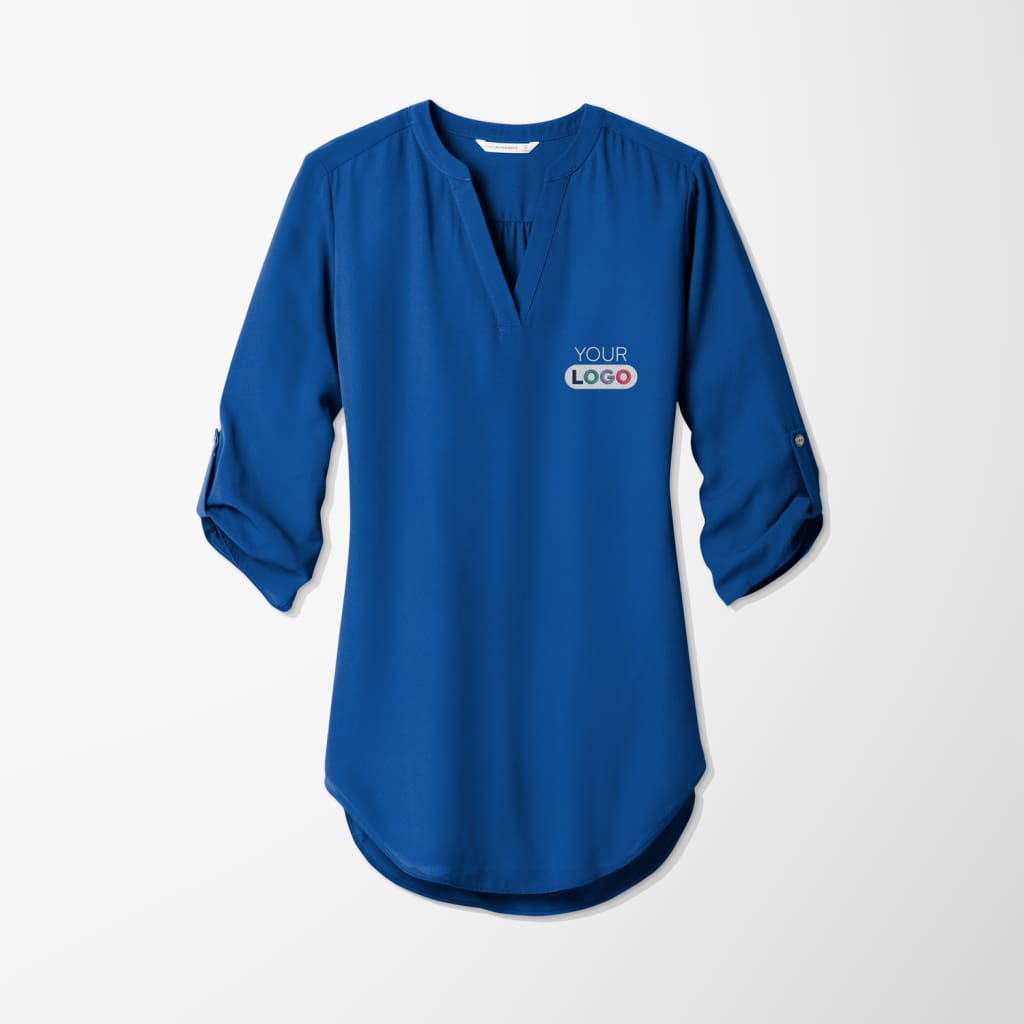How to Identify High-Quality Fabrics in Branded Clothing
How to Identify High-Quality Fabrics in Branded Clothing
Blog Article
The Value of Lasting Garments: How It Influences the Environment and Your Storage room
Sustainable clothing is increasingly recognized for its critical function in lessening the ecological influence of the quick fashion sector. By concentrating on green products and moral manufacturing approaches, it attends to pushing ecological issues. This shift not just profits the planet yet likewise influences consumer choices, causing a more thoughtful technique to closet monitoring. Comprehending these dynamics elevates crucial inquiries about fashion's future and individual responsibility fit it.
The Environmental Impact of Quick Fashion

Benefits of Sustainable Materials
Lasting products offer significant benefits, specifically via environmentally friendly fabric choices that minimize environmental harm. These materials also show sturdiness and durability, lowering the demand for constant substitutes. As a result, they contribute to a more lasting fashion business and advertise accountable customer behavior.
Eco-Friendly Fabric Options
While the apparel industry has actually long been related to rapid patterns and environmental harm, the surge of green material choices presents a transformative opportunity. Lasting materials such as organic cotton, hemp, and Tencel have actually gotten popularity as a result of their lower environmental impact. These textiles are often generated without hazardous chemicals and require much less water, reducing their carbon impact - Branded Clothing. Additionally, lots of eco-friendly textiles are biodegradable, adding to a round economic climate by decreasing waste. Picking lasting products not only supports ecologically responsible practices however likewise advertises healthier communities. As customers become much more mindful of their buying power, the need for environment-friendly textiles encourages brands to introduce and take on even more lasting production techniques, ultimately benefiting the earth and future generations
Toughness and Longevity Benefits
Numerous consumers are significantly recognizing the toughness and longevity benefits of sustainable materials in their clothes options. Unlike standard textiles, lasting products such as organic cotton, hemp, and recycled polyester are engineered to endure deterioration, leading to garments that last longer. This decreased frequency of replacement not only saves consumers money over time but also decreases waste created by quick fashion. Additionally, lasting garments frequently utilizes eco-friendly production techniques that boost fabric strength, contributing to a reduction in the overall carbon footprint. By investing in durable apparel, consumers can cultivate an extra lasting wardrobe while appreciating top quality pieces that maintain their aesthetic and capability with time. Resilience and longevity stand as key benefits of choosing lasting materials.
Minimizing Waste With Sustainable Practices
Decreasing waste in the apparel industry can be accomplished through cutting-edge techniques such as upcycling and repurposing materials. Furthermore, embracing minimal wardrobe techniques encourages consumers to prioritize high quality over quantity, eventually decreasing clothing consumption. Together, these approaches contribute greatly to an extra sustainable apparel design.
Upcycling and Repurposing Materials
Upcycling and repurposing materials have become innovative techniques in the apparel industry, changing disposed of fabrics right into important brand-new products. This technique not just reduces waste yet additionally encourages creative thinking and originality in apparel style. By taking old garments and products, designers can create distinct pieces that mirror individual style while decreasing the demand for brand-new resources. Furthermore, upcycling typically calls for less energy and water compared to traditional production procedures, considerably reducing the ecological footprint of style. As customers become extra familiar with sustainability, the popularity of upcycled clothing continues to climb, promoting a circular economic situation. Inevitably, these methods add to a more lasting future, where fashion prioritizes ecological health and wellness over quick production and usage.

Minimal Closet Approaches
As people significantly look for to lessen their ecological influence, embracing minimalist closet approaches has gained grip as an efficient technique to sustainable style. These techniques highlight quality over quantity, motivating customers to curate a smaller sized collection of functional, durable garments. By concentrating on classic pieces that can be combined and matched, individuals can reduce the frequency of acquisitions and eventually decrease waste.Additionally, minimalism advertises conscious intake, prompting shoppers to mirror on the environmental and honest implications of their choices. This method not only cultivates a more sustainable lifestyle however also streamlines daily decision-making regarding attire. As people welcome minimalist concepts, they add to a fashion society that values sustainability and accountable consumerism, inevitably causing a much more eco-conscious society.
The Role of Moral Labor in Lasting Style
While numerous customers are progressively conscious of the environmental consequences of their clothes options, the significance of honest labor techniques in lasting fashion can not be overlooked. Ethical labor incorporates fair earnings, safe working conditions, and respect for workers' legal rights, developing the foundation of liable style production. Brand names that prioritize honest labor not just uplift areas yet likewise set a requirement for accountability in the industry.Moreover, the assimilation of moral methods cultivates openness, allowing customers to make educated choices about their acquisitions. This method contrasts dramatically with quick fashion's unscrupulous labor versions, which typically focus on profit over individuals. By sustaining business committed to moral labor, customers contribute to a system that values human dignity together with ecological sustainability. Consequently, ethical labor is not just an add-on; it is vital to the wider objective of sustainable style, ensuring that the mission for eco-friendliness does not come with the cost of civils rights.
The Influence of Sustainable Clothing on Carbon Emissions
Sustainable garments has the prospective to considerably minimize carbon discharges associated with the fashion industry. Standard garment production contributes significantly to greenhouse gas discharges, largely due to energy-intensive production procedures and using non-renewable sources. In comparison, lasting style focuses on environmentally friendly products, such as organic cotton or recycled fibers, which usually require less energy to produce.Moreover, lasting brands tend to take on extra efficient manufacturing practices, minimizing waste and reducing overall exhausts. By focusing on sturdiness and ageless layout, sustainable garments motivates consumers to purchase much less often, more decreasing the carbon impact related to overconsumption.Additionally, many sustainable brands are committed to openness in their supply chains, allowing consumers to make informed options that align with their values. Ultimately, my company moving towards lasting clothing can result in a substantial decrease in carbon exhausts, contributing to a healthier world and a more sustainable future for the garment industry.
Sustaining Neighborhood Economic Climates With Lasting Selections
The change toward sustainable apparel not just addresses ecological problems but also substantially advantages neighborhood economies. By choosing sustainable style, customers typically sustain neighborhood craftsmens and small companies, enhancing community durability. These business normally operate a smaller scale, prioritizing workmanship and moral practices over mass production.Investing in locally made lasting clothing fosters work production and boosts financial development within neighborhoods. As consumers become much more familiar with the environmental impact of their purchases, they increasingly choose items that mirror their worths. This demand urges neighborhood producers to embrace sustainable techniques, contributing to a round economy.Moreover, sustaining neighborhood businesses reduces transport discharges, lining up with eco-conscious consumer actions. The interconnectedness of lasting clothes and local economies highlights the vital role that specific selections play in promoting both ecological and financial wellness. By promoting these regional connections, neighborhoods can thrive while likewise working in the direction of an extra sustainable future.
Transforming Your Storage Room: Tips for a Lasting Wardrobe
As individuals look for to minimize their ecological effect, changing a closet right into a lasting closet comes to be a crucial step. One reliable method is to evaluate existing apparel, maintaining only things that are used routinely which straighten with sustainability objectives. Prioritizing quality over quantity is vital; purchasing resilient items from environment-friendly brands can substantially decrease waste.Additionally, including second-hand things can rejuvenate a closet while reducing ecological damages. Organizing garments swaps with friends or giving away unused products can better promote sustainability.When buying, people ought to look for materials that are organic, recycled, or naturally degradable, and stay clear of rapid fashion sellers - Branded Clothing. Lastly, exercising conscious consumption by attentively considering each acquisition can add to a much more sustainable lifestyle. By applying these tips, one can create a wardrobe that reflects personal design while supporting ecological stewardship
Regularly Asked Questions
How Can I Determine Sustainable Clothes Brands?
To determine sustainable garments brands, one ought to investigate materials used, check for accreditations like Fair Trade, and analyze the brand's transparency about their production processes, labor practices, and environmental impact, making sure ethical and environment-friendly methods are focused on.
What Are the Expenses Connected With Sustainable Fashion?
The costs related to lasting fashion can vary substantially. Greater production expenditures, moral sourcing, and environment-friendly materials frequently result in raised list prices, which might discourage some consumers while try here interesting ecologically aware buyers.
Can Sustainable Apparel Be Fashionable and Stylish?
Sustainable apparel can undoubtedly be trendy and trendy. Designers increasingly focus on ingenious products and ethical manufacturing methods, verifying that fashion and sustainability can exist together. Consumers now have diverse alternatives that blend looks with environmental awareness.
Just How Does Washing Clothes Affect Their Sustainability?
Cleaning garments greatly effects sustainability by consuming water and energy, contributing to look here air pollution, and causing microplastic release. Frequent washing can degrade textiles, shortening their life expectancy and raising the demand for replacements, inevitably intensifying environmental problems.
What Is the Life-span of Sustainable Apparel Compared to Quick Fashion?
The life-span of lasting clothing usually exceeds that of rapid fashion things, often long lasting a number of years as a result of quality materials and workmanship. In comparison, fast fashion garments might weaken quickly, necessitating more frequent replacements. Sustainable clothes is progressively acknowledged for its important duty in decreasing the environmental effect of the fast fashion market. While numerous customers are significantly mindful of the environmental repercussions of their garments selections, the relevance of honest labor methods in sustainable fashion can not be overlooked. Branded Clothing. Sustainable clothing has the potential to greatly decrease carbon emissions associated with the style market. In comparison, sustainable fashion concentrates on green materials, such as natural cotton or recycled fibers, which often need less power to produce.Moreover, lasting brands tend to take on a lot more effective manufacturing techniques, reducing waste and decreasing total discharges. By prioritizing durability and classic style, lasting garments motivates customers to acquire much less often, more decreasing the carbon footprint connected with overconsumption.Additionally, many lasting brands are devoted to transparency in their supply chains, making it possible for customers to make informed choices that straighten with their values
Report this page